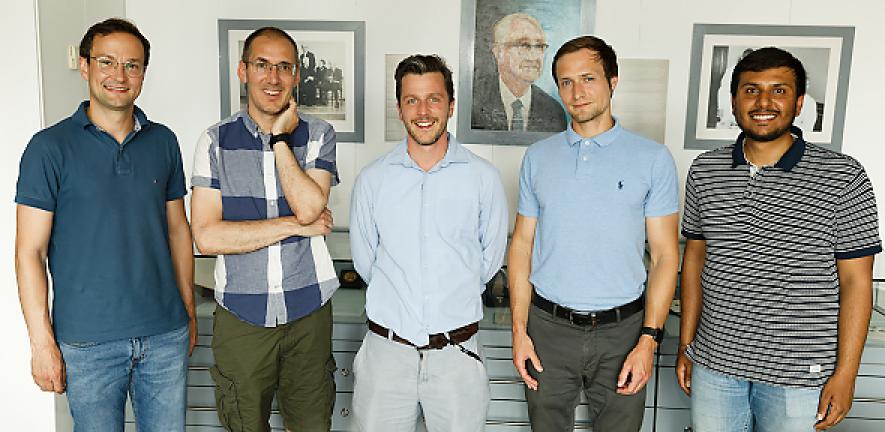
The virtual centre was originally founded by former 1968 Professor Daan Frenkel and others in 2011. Its goal was to bring together researchers from departments across Cambridge who share a common interest in numerical modelling and to encourage new ideas, collaborations and joint training of graduate students
Daan says: “Since the centre was founded, the community of people using molecular simulations has grown tremendously.” He also notes the increasing availability of powerful simulation packages and the growing number of molecular simulations that are used alongside experimental work. In fact, Daan and Berend Smit recently updated their classic text Understanding Molecular Simulation to reflect what Daan calls a ‘quiet revolution’ in the field.
Coming of age
The current 1968 Professor of Chemistry Angelos Michaelides agrees. “I think the field has really come of age,” he says. “The quiet revolution Daan describes has been remarkable, compared even from when I did my PhD in the early 2000s. We saw a step change over the last 20 years, and now we are witnessing another one with machine learning.”
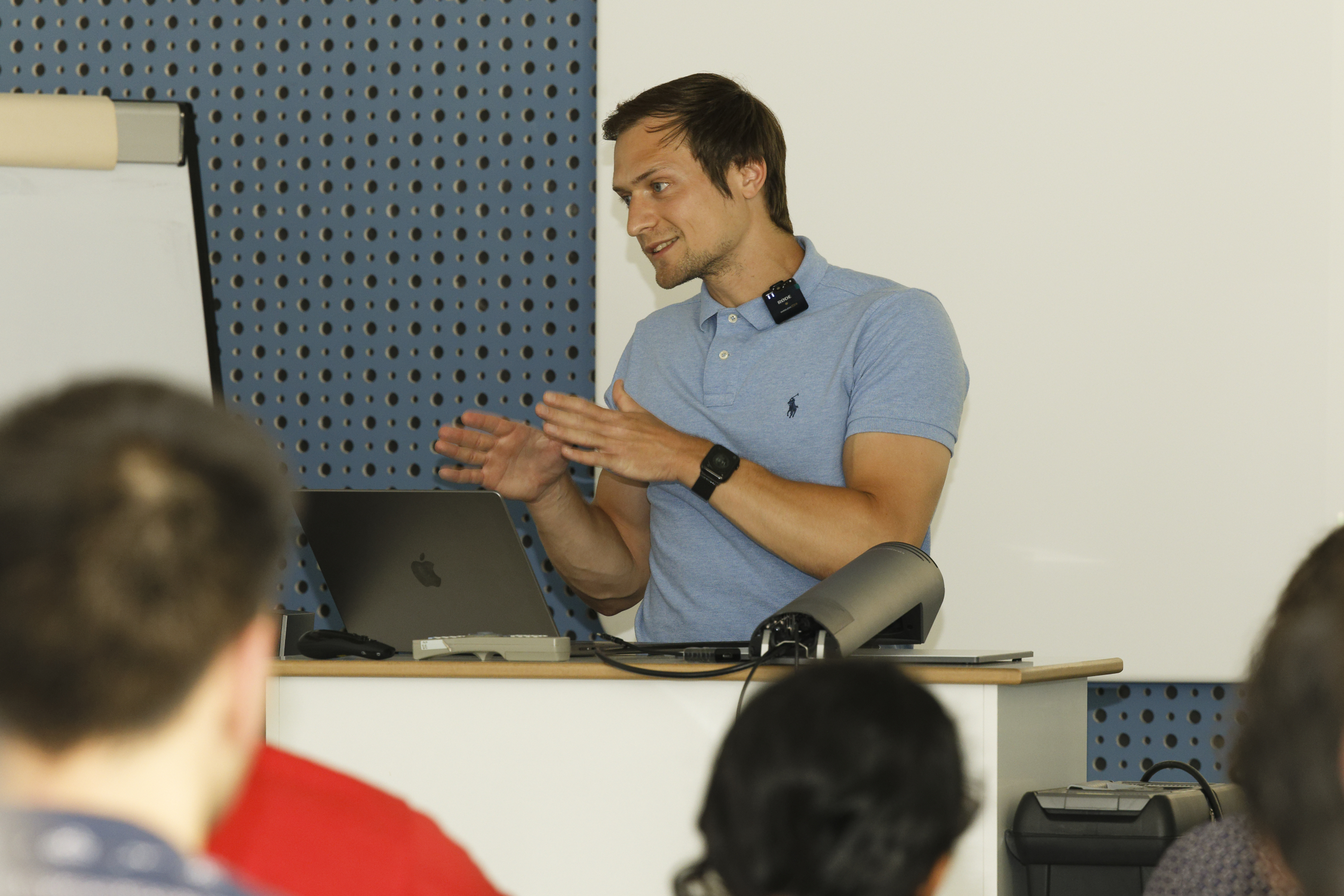
Above: Dr Daniel Graf, a DFG fellow in the Thom Group, at a Monday seminar.
Some of the biggest changes involve the increasing accuracy of computer simulations and their growing applicability to a range of scientific areas. “Twenty years ago, we could do good simulations, but the connection with the real world was rather weak,” says Angelos. “But now we can do measurements and make predictions about new materials and properties. A lot of our recent papers show that simulations can make predictions that drive experiments. For example, with other computational collaborators we recently predicted a new catalyst, so people went out and tried to make it, and it worked!”
Enthusiasm
This expansion and refinement of computational chemistry makes the Lennard-Jones Centre more relevant than ever. And since Angelos joined the department in 2019, he has been actively involved in promoting its activities. But he is by no means acting alone. “One of the nice things about the LJC is the enthusiastic people,” he says. “There is a lot of enthusiasm and support for the centre both inside and outside the department.”
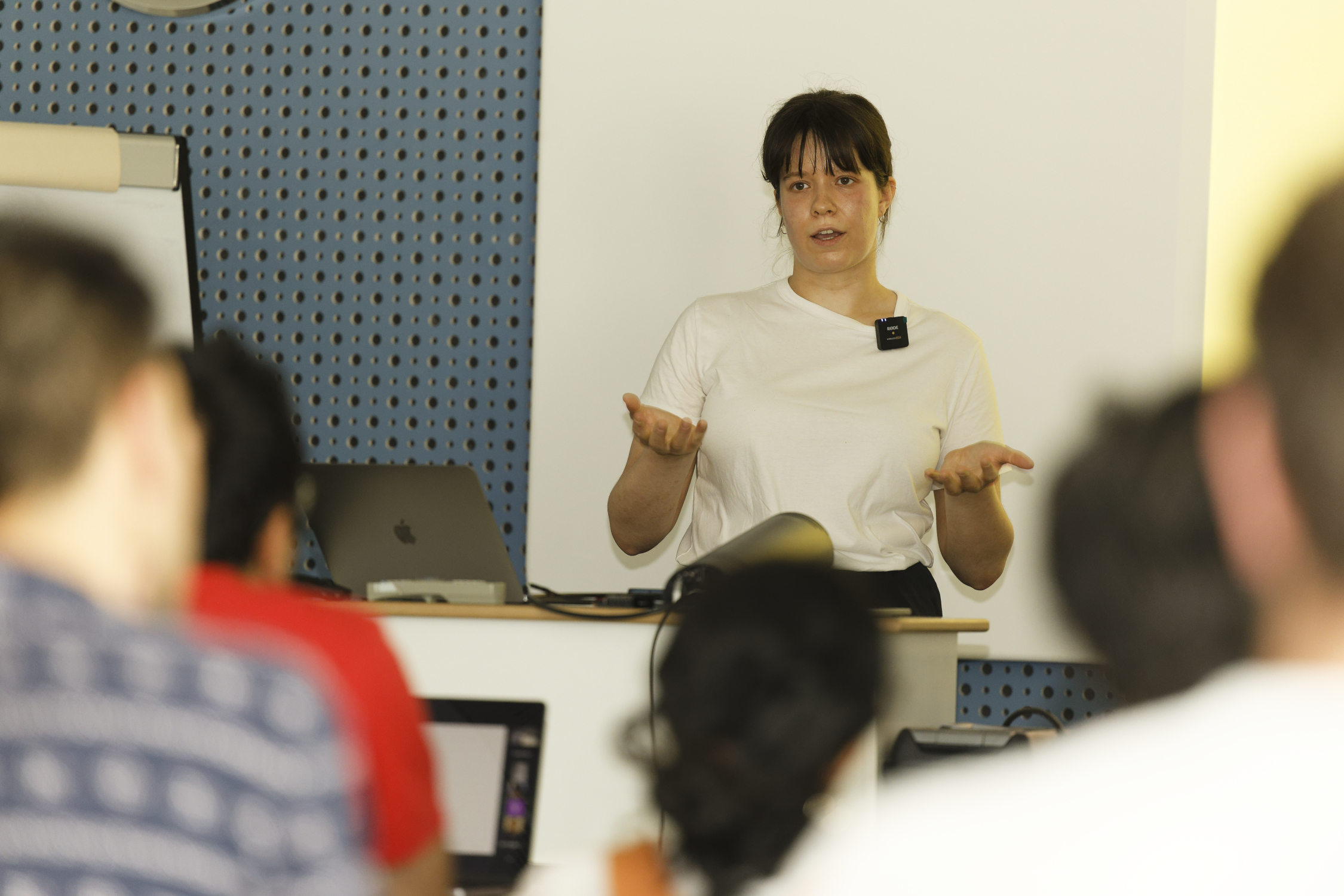
Above: Elena Gelzinyte, a PhD student in Professor Gábor Csányi's group in the Department of Engineering, talks about her research at a recent Monday seminar.
Dr Christoph Schran is a case in point. Christoph is a research fellow in Angelos’s ICE group, who is developing machine learning methodology in close collaboration with experimental models. Together with Dr Stephen Cox, a Royal Society University Research Fellow in the department, he is a member of the Centre’s management board. They were among the first organisers of its popular Monday seminars which showcase the techniques and tools used by different groups.
“Our activities have led to many new connections and collaborations between different groups in Cambridge as well as computing resources for everyone in the Centre through a recently secured grant,” says Christoph. “In addition, it is great for the PhD students to have a safe environment to present and discuss their research and make connections to other areas and departments.”
Members also regularly gather to share food and research at community-building events, and an annual student day enables students across disciplines to learn about the different applications of techniques they may be using.
“The seminar series is run by a small group of early career researchers, and the student day is student-led,” explains Angelos. “This is all done with the advice and guidance of the governing council, but we try to keep it as much a grass-roots initiative as possible.” Christoph agrees: “We are trying to empower everyone who’s interested and make it a community-driven initiative.”
The board has also applied for funding from the Royal Society of Chemistry to establish a women’s network which would include a mentoring scheme, a yearly women’s day and regular workshops on career development and related topics. Another initiative is the LJC ambassadors, who represent the Centre within their research groups and provide feedback and new ideas.
Breaking down barriers
Professor Alex Thom is a University Lecturer in Theoretical Chemistry in this department whose research mainly centres on quantum computing. He is also a member of the centre’s governing council, and points out that getting a chance to meet and talk with researchers in other groups can lower barriers and enhance learning.
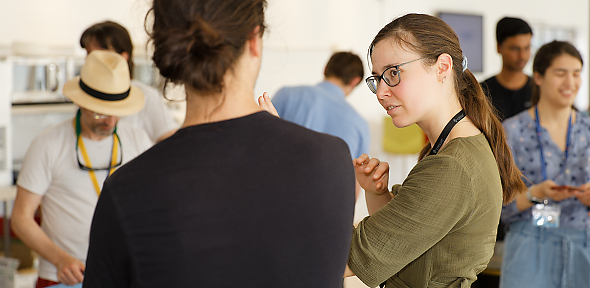
“The centre brings together people interested in similar programmes so they are able to discuss them. For example, I’m not actively working with my colleagues in the Department of Materials, but because I know them through the centre, it’s easier for me to drop in and ask them questions. Also the students get a lot more cross-discipline experience and get ideas from each other – one of my students has become involved with engineering this way,” he says.
Growing participation
Angelos agrees: “One of the great things about computational science is that we are united by tools and techniques which can be applied to all sorts of problems and questions in different areas like physics, engineering or chemistry. Almost all the theoretical researchers in this department are engaged with the centre, which also has members from computational groups in Physics, Materials Science, and Engineering.”
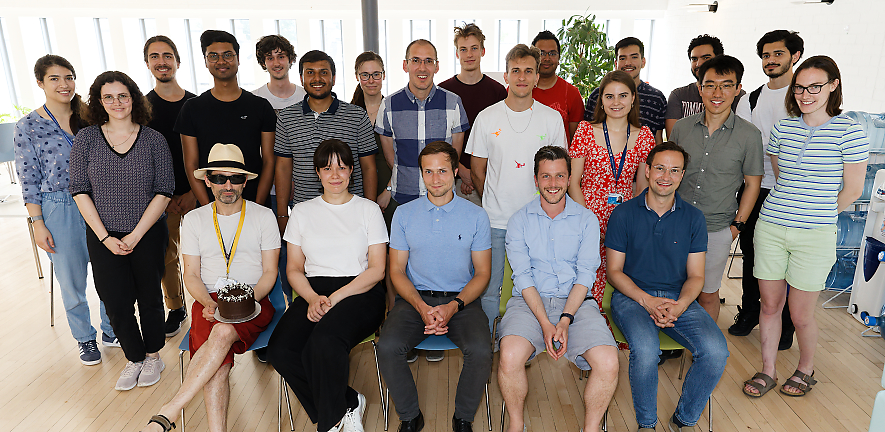
A recent Monday seminar.
“Bringing people together to share competence and techniques does two things: it provides a community of people you can learn from, and overall raises the standards, especially for students who can see how people might be using a similar technique but applying it to a different problem.”
The centre’s positive influence is demonstrated in Angelos’s own ICE research group. “It’s helped to strengthen our collaborations with other departments, and in particular with Professor Gábor Csányi’s group in Engineering,” he says. “Gabor is a key figure in the LJC. We had a collaboration before, but the centre has really reinforced it, and now we have a number of joint students and projects.”
International influence
As a node of CECAM (the Community of Atomistic Modelling researchers in Europe), the Lennard-Jones Centre also has an international presence. It is planning an LJC summer school next year, and in September will be hosting its inaugural international conference called “Theory and Molecular Simulation in the Physical Sciences” at Downing College.
“This is a big international conference, where we will be bringing people to Cambridge to expose them to the activities of the Lennard-Jones Centre, and also giving opportunities for our students to learn what’s happening in the forefront of the field around the world. It’s the first of what we hope will be a regular annual meeting in Cambridge, the birthplace of Quantum Chemistry in the UK.”

